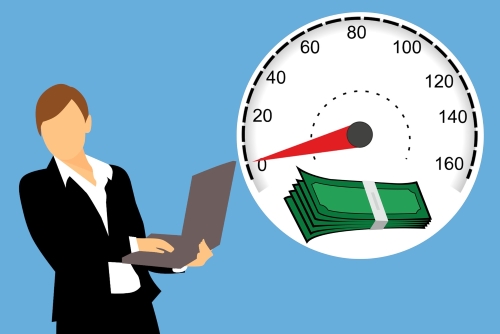
Mortgage lenders make money primarily through interest payments, which means many loans come with a mortgage prepayment penalty. And while not impossible to prepay your mortgage, it’s important to understand prepayment penalties and how they work.
How penalties vary by lender
Some lenders charge prepayment penalties for paying out the loan balance in one payment. Penalties will differ depending upon the loan’s length and the corresponding interest charges. Some utilize the remainder of your outstanding loan balance, while others can use sliding payments based on time you’ve spent repaying your mortgage.
Should you accept a loan with a prepayment fee?
Prepayment penalties are meant to keep borrowers from paying off their loans before the end of the loan term. In some cases, they can reduce the benefits of eliminating the debt and avoiding interest. Prepayment can also cause temporary damage to your credit score.
However, not every loan includes a prepayment penalty clause. Regardless of whether you anticipate refinancing or paying your mortgage early, it’s important to understand the terms and conditions from your lender.
How much do prepayment penalties cost?
There are a few ways lenders calculate a prepayment penalty. Often, it can be a small percentage of your remaining balance. This means you’ll pay a higher penalty the sooner you pay off the loan.
As mentioned earlier, some lenders will charge a certain number of months’ worth of interest, while others use a sliding scale based on the length of the mortgage. It’s also possible for a prepayment penalty to be a fixed amount, though this is more common in personal loans compared to mortgages.
Prepayment penalty examples
How does the math actually work for prepayment penalties? For a percentage of the remaining balance, consider a mortgage loan of $200,000. If the penalty is equal to 2%, and you’ve only paid $20,000 of the loan amount (10%), your penalty would come to $3600:
200,000 - 20,000 = 180,000
180,000 x 2% = 3,600
There are definite advantages to paying off a mortgage early. However, it’s crucial to understand the terms of your loan and whether a prepayment penalty fee is something you need to consider.
About the Author

Tina Broyles, DRE 01009212 & NMLS 91630
Headline: Tina Broyles: Your Expert Real Estate Agent for Fremont, San Jose, and the Bay Area | eXp Realty
Bio:
As a dedicated real estate professional and a long-time resident of the California Bay Area, I have been proudly serving the real estate community since 1987. My mission is to provide my clients with unparalleled professionalism, in-depth market knowledge, and a caring approach that has resulted in a business built almost entirely on referrals.
Your Trusted Real Estate Advisor in the Bay Area
I specialize in the vibrant and diverse real estate markets of Fremont, Campbell, San Jose, Saratoga, Cupertino, Sunnyvale, Morgan Hill, Santa Clara, Mountain View, and Milpitas, CA. With over three decades of experience, I have a deep understanding of these communities and can provide you with the insights you need to make informed decisions.
One of the most consistent compliments I receive from clients is about my responsiveness to their needs. Your goals are my top priority, and I am committed to being there for you every step of the way. I am honored to have been voted "Best of Milpitas" every year from 2000 to 2020, a testament to my dedication to my clients and my community.
About My Business: eXp Realty
As part of the innovative eXp Realty team, I bring a diverse set of skills and a commitment to excellence to every transaction. We leverage cutting-edge technology that is "beyond expectation" to provide you with a seamless and efficient real estate experience. My team and I offer the perfect balance of experience and professionalism to help you achieve your real estate dreams in the Bay Area.
Community Involvement
I believe in giving back to the community that has given me so much. I am a happily married mother of two and a proud grandmother to two beautiful granddaughters, Audrina and Chesney. In my free time, I enjoy golfing, exercising, and my weekly Bible study. I am also passionate about serving the homeless community in Milpitas and supporting our local businesses.
I would be honored to get to know you and your family and put my extensive real estate experience to work for you.
Credentials:
